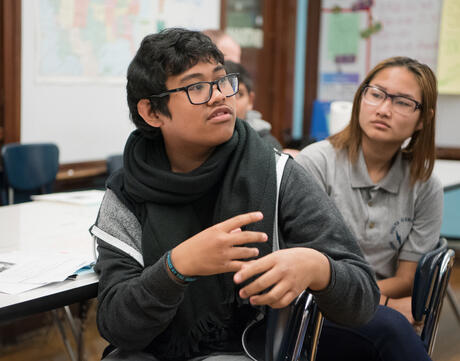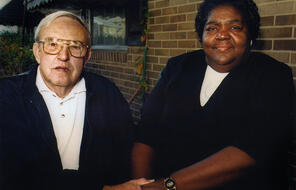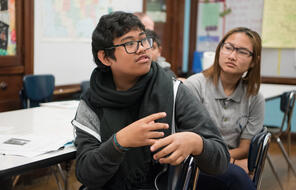
Anatomy of an Upstander
At a Glance
Language
English — USSubject
- English & Language Arts
Grade
6–12- Culture & Identity
Overview
About This Learning Experience
When invited to draw connections between literature and life, students become aware of the variety of ways, large and small, that individuals can speak out or take action in order to bring about more just and compassionate communities. Stories of upstanders encourage students to think about the ways that they too can participate as caring, thoughtful citizens. Such stories also help students to consider the ways in which upstanding can carry great risk, from ostracism to bodily harm. There may be instances when the risks outweigh the benefits, and doing nothing in the moment is the safer decision.
The following learning experiences support students in thinking critically about the choices, risks, and rewards that are involved when they are called upon to be upstanders. By exploring the factors that motivate real or fictional characters to take action, or not to take action, at key moments of decision-making, students can imagine a range of possible actions and consequences open to them. Through this process, students can come to realize that even though they are young, they still have agency and power to impact others and shape their communities through their choices and actions.
Preparing to Teach
A Note to Teachers
Before using this learning experience, please review the following information to help guide your preparation process.
Procedure
Activities
Materials and Downloads
Quick Downloads
Download the Files
Unlimited Access to Learning. More Added Every Month.
Facing History & Ourselves is designed for educators who want to help students explore identity, think critically, grow emotionally, act ethically, and participate in civic life. It’s hard work, so we’ve developed some go-to professional learning opportunities to help you along the way.
Exploring ELA Text Selection with Julia Torres
On-Demand

Working for Justice, Equity and Civic Agency in Our Schools: A Conversation with Clint Smith
On-Demand

Centering Student Voices to Build Community and Agency
On-Demand















